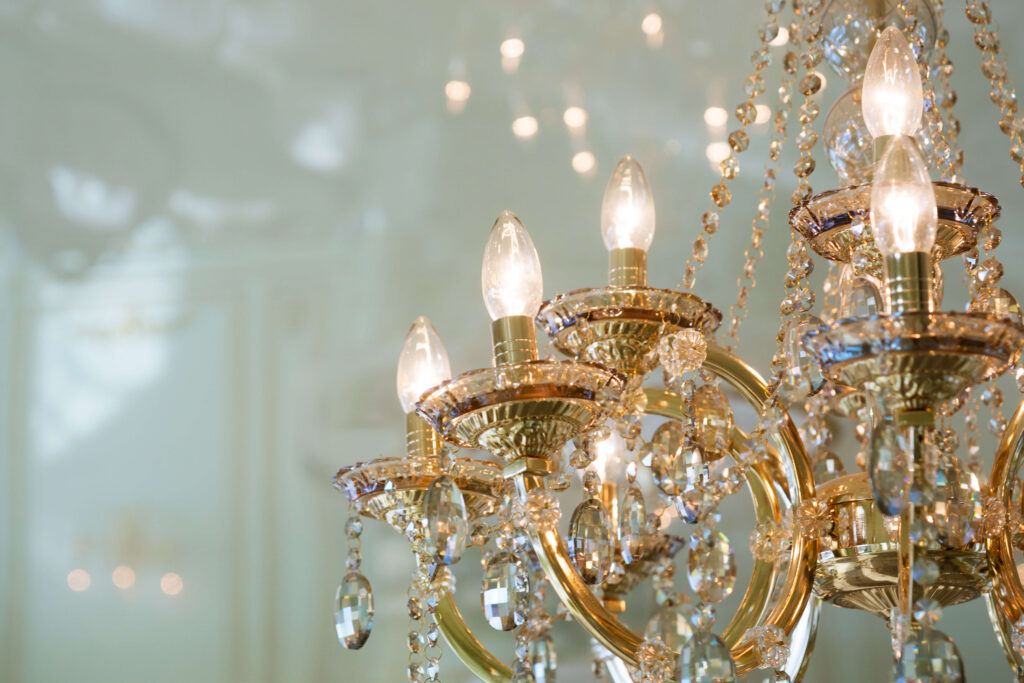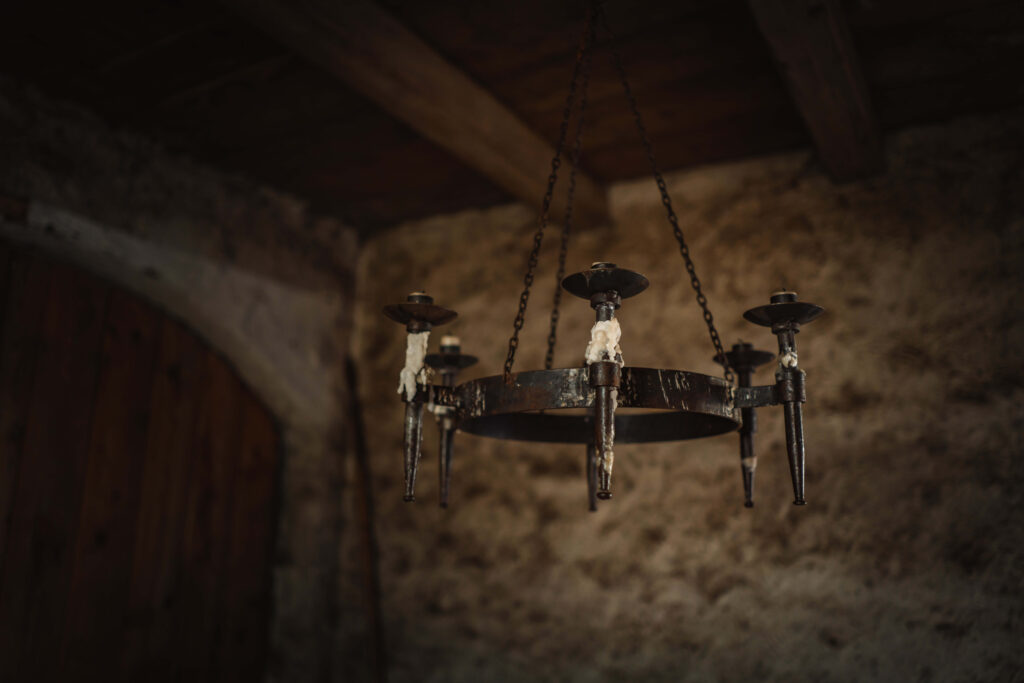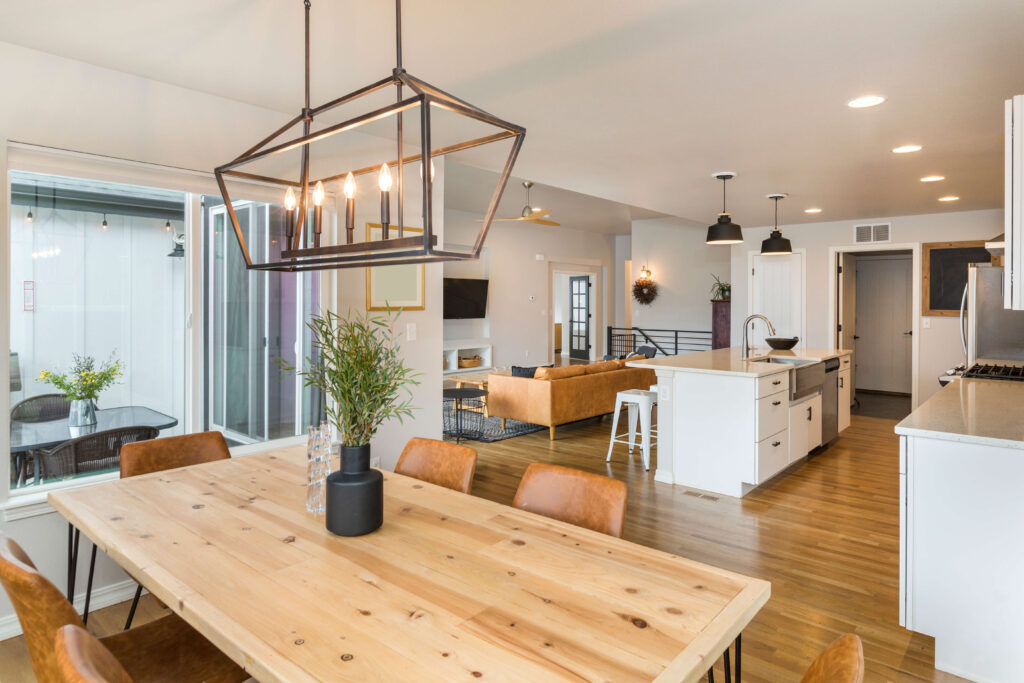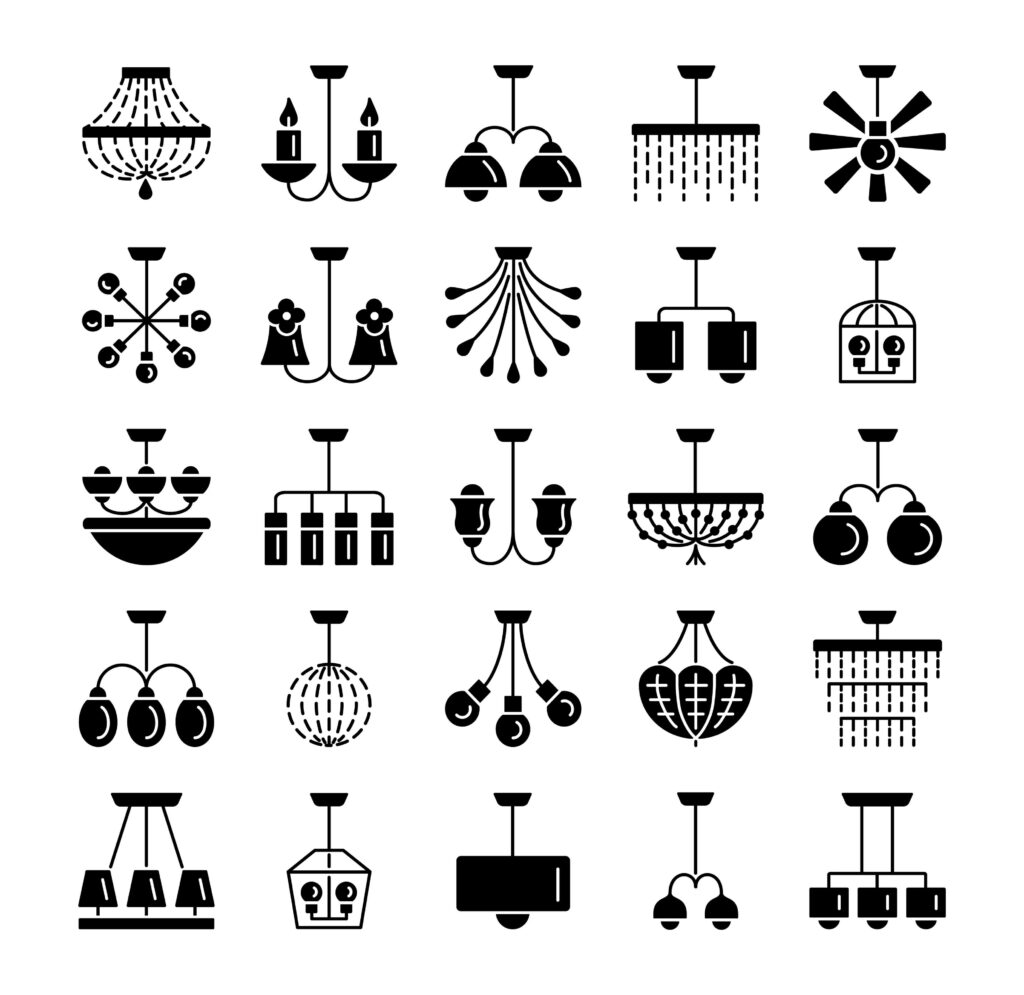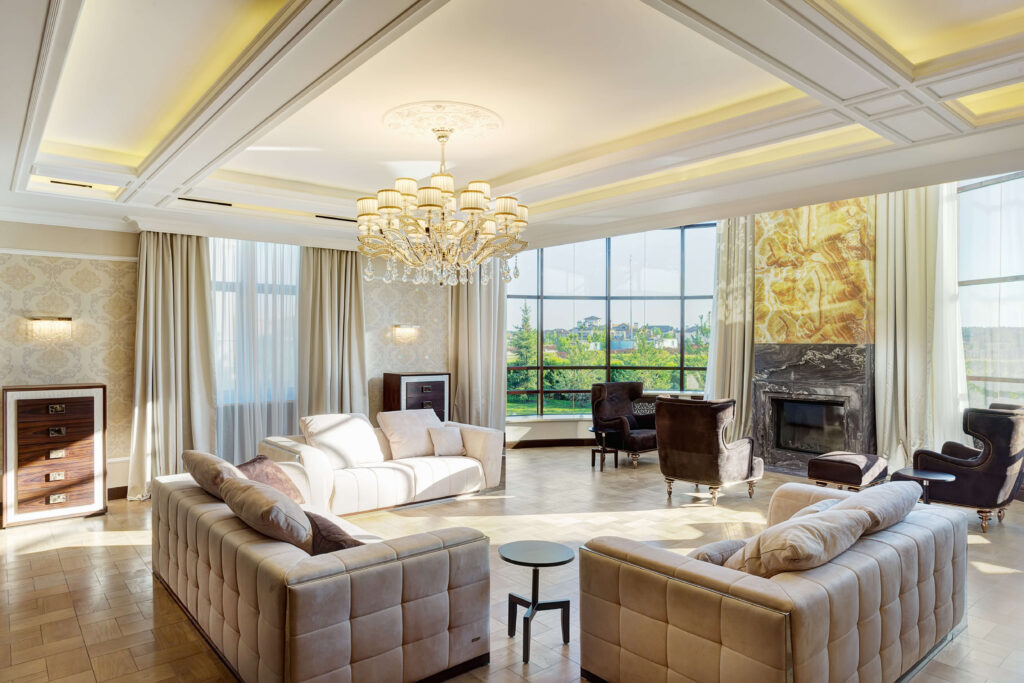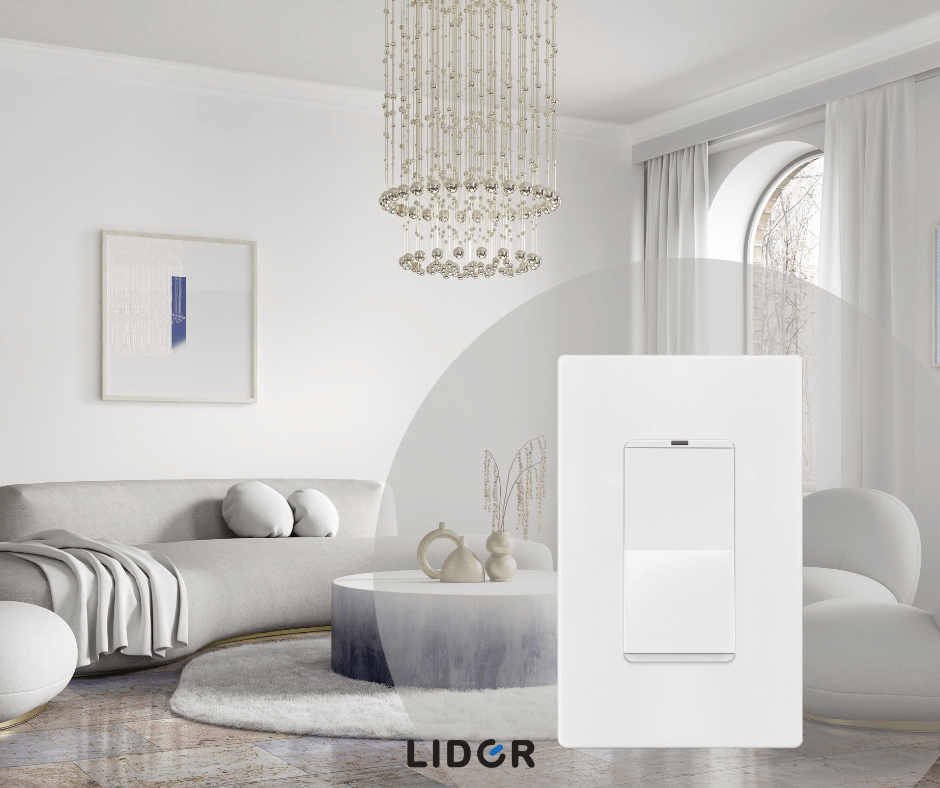The chandelier is a statement piece with a lot of power behind it. They’re most commonly found in entryways, living rooms, or dining areas, and there’s a good reason for that. Adding a chandelier to your living room can add a deeper sense of elegance or personality to the room. The concept of a chandelier is nothing new, but modern craftsmen have made it easy to find designs and styles for any aesthetic. This blog will cover the historical roots of chandeliers, their rise to popularity, and the different styles available for a modern living room.
HISTORY OF THE CHANDELIER
The history of the chandelier goes back surprisingly far. Molded candles and candle holders were around as far back as the times of Sumerian and Egyptian culture. However, the polycandelon, the first precursor of the actual chandelier design, didn’t appear until the 6th century in the Byzantine Empire. These chandeliers weren’t without their problems, though. Since they used very early candles, the product was drippy and smokey. The wicks also needed consistent maintenance, so most chandeliers of this time were outfitted with pulley systems.
Since candles were a commodity for the wealthy, chandeliers didn’t have much presence at first. It wasn’t until the Middle Ages that they became more commonplace. As brass and other metalwork began to grow throughout Europe, so did the concept of chandeliers. There also came an influx of Venetian glassworkers in this period, which helped take glass chandeliers to the market. Before then, most chandeliers were made of wood and metal, and they were very minimalist.
The 17th and 18th centuries were a time of honing the craft and style of chandeliers. Glass crystals were invented in the 17th century, allowing for extremely beautiful ornate models. The 1700s saw the Industrial Revolution, bringing forth the Neoclassical style and impressive new stem designs. As gas and electric lighting came into being in the late 1800s, so did chandeliers of those kinds. Technological advances only made the production of glass and metal easier, allowing the chandelier to make its way into the modern home.
Though they are most common in living areas, the versatility of modern chandeliers has made them popular throughout the home. If you’re unsure about adding a chandelier to your home, there are plenty of reasons why it can be a helpful addition. Among the multitude of reasons is the possibility of space saving. By installing a chandelier on your ceiling, you can add natural light coverage that takes up no floor space. This opens up the room for more decorating where lamps would usually need to be placed.
As a result of their hanging design, chandeliers will never cause damage to your walls like other light fixtures. And as a simple matter, chandeliers can create a warm and welcoming atmosphere in whatever room they are placed. This is perfect for your dining room, living room, or entryway.
DESIGN AND STYLE OPTIONS FOR YOUR CHANDELIER
There are many styles of modern chandeliers to pick from. There are general design options based on aesthetics, ones based on specific shapes, certain lighting types, and a variety of generally unique options. Look below for details on all of them.
The first group of chandeliers to look at is based on common aesthetic flairs. With minimalism on the rise, contemporary chandeliers stretch the basics of the chandelier to give new and interesting ideas for how they may be used. These include avant-garde artistic pieces or practical pieces that can be used for things like holding notes.
Another well-known style of choice is rustic, which uses wrought iron and wood to nod to the classic American West. This is in a similar vein to the farmhouse style, which uses exposed wood or metal and simple, rural decor to make a statement. The last of the common aesthetic styles is the industrial format. As the name suggests, it uses polished metal accents and bare Edison bulbs to recreate a modern factory/industrial feel.
Something of interest to consider when deciding on chandeliers is the variety of shapes available. These go beyond the common stem and arm basis of the device. First of the shapes are square/rectangular chandeliers that hold a very simplistic design and can be perfect as a more subtle accent. Next, there are round chandeliers which work in a circular dynamic and are great for light coverage. This is different from the globe shape that forms from multiple arms or sections taking the general shape. They are an impressive and versatile type that can be quite the eyecatcher. There are also cluster chandeliers, formed from decorative clusters of lights with the occasional cover. And these are just a few of the many stunning styles at hand.
On the subject of unusual styles, there are many to choose from. The Sputnik model of the chandelier looks like the satellite it’s named after, with multiple lights sprouting in all directions. It can give a quirky feel to your room, or invite a spacey one if that is your desire. There are also caged chandeliers that house each arm and subsequent light in their own cage/box (usually hollow). And if you want to add another layer of elegance to the room, a beaded or crystal chandelier may be perfect for you. They cover the body or arms in beads and give a nice sophistication to the space.
The last thing to consider for your chandelier of choice is the lighting function it will fulfill. There is uplight, downlight, and ambient light. Uplight chandeliers focus light upward to provide a reflected ambiance off of the ceiling. Downlight chandeliers provide unobstructed, focused light below where they are hung. This is ideal for rooms that need a lot of powerful light in one spot. Ambient chandeliers pull out the purpose of the device the best, giving off diffused and non-direct light in a room.
COMPLEMENTARY LIVING ROOM PIECES
The living room can be full of furniture or decorative pieces, so finding something to complement your chandelier can be a cinch. The most obvious option is the living room couch. Pairing the color or upholstery of your couch with the style of your chandelier can make an even more powerful statement. Additionally, simply positioning your couch in a particular spot can give the whole room a beautiful aesthetic flow.
An interesting thought is considering other things that may be able to act as statement pieces in tandem with your chandelier. There are so many ways to create one, and using a distinctive wallpaper or wall finish is one of them. Combining the style of your chandelier with the wall design of your room can make a powerfully resonating statement. On the other hand, using an adverse wall finish can create an exciting clash with your chandelier of choice. A rug or carpeting choice can create similar results as your wall finish. A nice and complementary color choice will help echo the feel of your chandelier throughout the room.
COMPLEMENTARY COLORS/PRODUCTS
Thanks to the litany of finishes at hand, chandeliers can come in many colors. A metal chandelier can be made from silver, bronze, chrome, or gold to name a few. Glass is also easy to color now, making for even more color choices. This adds an entirely new layer to design that can help create an even more powerful impact. By using your chandelier as the basis of your aesthetic choice for the living room, you can create plenty of complementary color ideas from there.
An important detail to remember when designing an aesthetically pleasing room is the minor accents at hand. Electrical devices and appliances will be common in a living room and matching them to your idea can be difficult. Thankfully, Lider products are here to help. We have a large catalog of devices with a variety of colors and finishes. Complete the look of your perfect living room with Lider’s elegant line of products.

